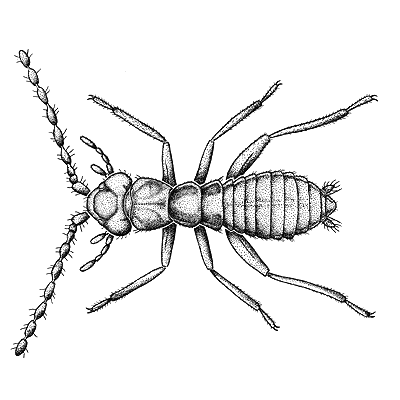 |
Order
- ZORAPTERA
(Greek, zoros = pure; apteros = wingless)
Common Names: none
Distribution: Tropical and warm temperate
regions; absent from Australia
Description
Zorapterans are quite small insects (less than 3 mm long) and resemble termites. The antennae resemble a chain of beads (moniliform). Compound
and simple eyes (ocelli) are present in winged species but they are absent
in wingless species. Mandibles are present and well developed. If wings
are present, the hind wings are smaller than the forewings. The venation
in both pair of wings is reduced. Wings are shed in a manner similar to
ants and termites.
The insects are gregarious and occur in forest litter, rotten wood or
close to termite colonies.
Nymph
The juveniles emerge from the eggs as miniatures of the adults (nymphs)
but have slightly different structures depending upon whether or not wings
will be developed in the adult.
Members
Zorapterans.
Food
Zorapterans consume fungi and small arthropods although the latter is
uncertain.
Importance
No known importance apart from membership in the food chains of any
ecosystem.